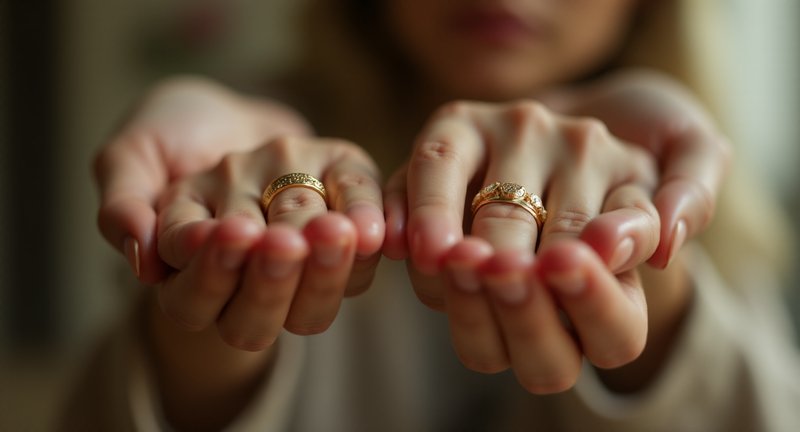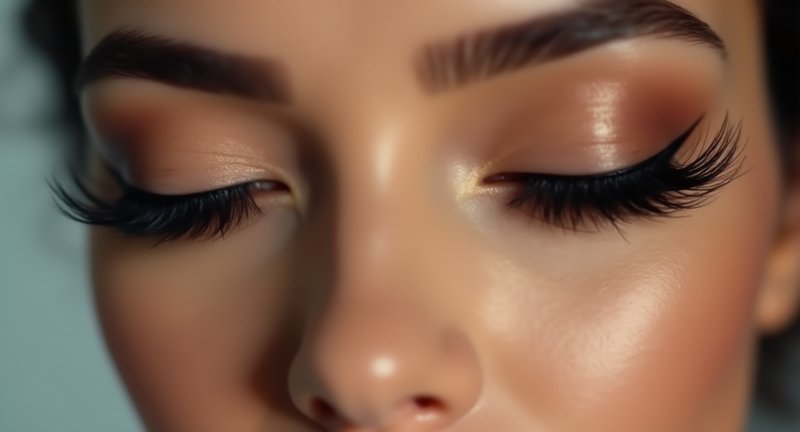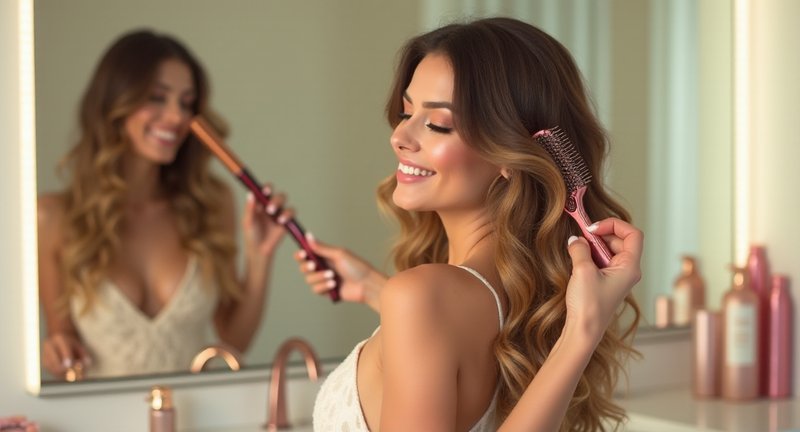Introduction to Earring Gauge Size Chart
With a focus on earrings, the phrase ‘Earring Gauge Size Chart’ may sound a bit technical, but trust me, it’s your best friend when you’re trying to figure out which size fits your style or piercings. Whether you’re new to body jewelry or you’ve been rocking them for years, understanding gauge sizes can make or break your look – and even your comfort!
Gauge sizing isn’t quite as straightforward as standard earring sizes, so it’s helpful to have a guide. The thicker the wire or post of the earring, the smaller the gauge number. Yeah, it’s one of those systems that feels counterintuitive, but you get used to it!

To make it easier, here’s a breakdown of some common gauge sizes you’ll come across in your ‘Earring size reference guide’ journey:
- 20 Gauge (0.8mm): This is the most common size for standard ear piercings. If you’ve ever gotten your ears pierced at a mall or jewelry shop, this is probably the size they used.
- 18 Gauge (1.0mm): Slightly thicker than a 20 gauge, but still popular for ear piercings, especially if you’re looking for a snugger fit.
- 16 Gauge (1.2mm): A size often used for cartilage or higher ear piercings. You’ll feel the difference when you move up to this size.
- 14 Gauge (1.6mm): This is where you start to see jewelry for body piercings like the septum or belly button.
It’s also worth noting that if you’re thinking about stretching your piercings, you’ll need to work through the different gauges gradually. Never jump sizes too fast – trust me, your ears will thank you!
An ‘Piercing gauge measurement chart’ can really take the guesswork out of finding the right size. Keep one handy, and before long, you’ll be a pro at gauging earrings for any style.
Understanding Earring Gauge Size Chart
When I first ventured into the world of earrings, I quickly realized there’s more to it than just style. One of the trickiest things to wrap your head around is understanding sizes and how they relate to comfort.
You see, not all earrings are created equal. Depending on how your ears are pierced, the size of the post, or gauge, determines how the earring fits. If it’s too large, it might feel uncomfortable. Too small, and the piece could sit awkwardly or even slip out.
I remember browsing different styles and feeling confused when I saw numbers like 18, 16, and 14. These aren’t random, though they refer to the thickness of the post. What’s wild is, as the numbers get smaller, the posts actually get thicker. I know, counterintuitive, right?

Most people don’t realize that finding the right size can make or break your comfort level. Especially when you’re changing between earring types going from a standard stud to a thicker hoop, for instance. It’s all about ensuring you’re balancing aesthetics with practicality.
So, if you’re like I was bewildered by all those numbers and sizes don’t worry. It’s a little confusing at first, but once you get the hang of it, you’ll find the perfect match for your ears. And trust me, when it fits right, you’ll feel it.
Introduction to Earring Gauges
When I first started exploring the world of body jewelry, the concept of ‘earring gauges’ was a bit mystifying. I had no idea what I was getting into let alone how to pick the right size for my ears. If you’re standing where I once did, let’s take a journey into the fascinating realm of earring gauges.
Earring gauges essentially refer to the thickness of the jewelry worn in a pierced hole. Unlike traditional earrings that are often delicate and dainty, gauged earrings can range from small, discreet sizes to larger, bold statements. It’s not just about decoration gauging can be an art form, one where you slowly stretch your earlobe to accommodate wider jewelry over time.
Now, if you’re a beginner, here’s something that might surprise you: the smaller the gauge number, the bigger the jewelry. It’s counterintuitive at first, but you’ll get used to it. For instance, a 16-gauge earring is thinner than a 10-gauge earring. That takes a little mental adjustment!
Here are some helpful tips I’ve picked up over the years:
- Start small: If you’re new to gauging, don’t rush into the larger sizes. Let your ears adjust gradually.
- Go slow: Stretching your ears too quickly can cause damage, including tearing or scarring. Trust me, patience pays off.
- Use quality materials: Opt for surgical steel, titanium, or organic materials like wood and stone for a more comfortable experience.
By easing into this, you’ll find gauging to be a fun and creative way to express yourself.
Understanding Gauge Sizes for Earrings
Let’s dive into the fascinating world of gauge sizes for earrings, a detail often overlooked but crucial to any piercing journey. I remember my first experience with gauges – the confusion, the numbers, the fear of getting it wrong. If you’ve been there, trust me, you’re not alone.
Gauge size essentially refers to the thickness of the earring post, which might sound insignificant, but it’s the backbone of finding the perfect fit. Going smaller or larger than what’s comfortable can lead to discomfort, or even damage, to the piercing. So yes, it’s a big deal!
The smaller the number, the thicker the post, which seems counterintuitive at first. It’s like a secret code that you need to crack to truly understand how it works. A 16 gauge might sound tiny, but it’s thicker than an 18 gauge, and this is where most first-timers get tripped up.
Over the years, I’ve learned that not all ears (or piercings) are created equal. Some people may need a specific gauge to match the type of piercing they have. This can even vary depending on which part of the ear you’re decorating. Knowing your gauge size is like having a tailored suit – it ensures comfort, style, and long-lasting wear.
It’s always a good idea to consult with a professional if you’re unsure of your size. Trust me, it’s worth the peace of mind. Get it right, and your earrings will thank you for it. Get it wrong, and you might be in for some unwelcome surprises.
How to Use a Size Chart for Earrings
Concerning buying earrings, understanding a size chart can be the difference between finding a piece that fits like a glove or one that feels all wrong. I’ve learned this from experience, and trust me, I’ve made the mistake of buying earrings that either went unnoticed or, worse, felt like anchors tugging at my ears.
So, how do you use a size chart for earrings effectively? Let me break it down in a way that won’t leave you cross-eyed.
First, the key thing to focus on is diameter. Many charts use millimeters to indicate the width of a hoop or stud. If you’re anything like me and don’t have a ruler handy, compare it to something you know: for example, 8mm is roughly the size of a pencil eraser.
Here are a few points to keep in mind:
- Studs: Typically range from 3mm (subtle) to 10mm (bold). Think of how much attention you want on your ears.
- Hoops: Often measured by outer diameter. Smaller hoops (10-20mm) give off a delicate, everyday vibe, while larger hoops (30mm and above) scream boldness.
- Dangly Earrings: Length matters here. Some charts will tell you the full length from the piercing to the end. If you’re eyeing something dramatic, consider whether it’ll brush your shoulders or stay comfortably above.
One last thing, don’t ignore weight. A pair that looks lovely on the chart might feel a little too heavy after a few hours. I always try to balance style with comfort, and I encourage you to do the same.
At the end of the day, size isn’t just a number it’s how you’ll feel wearing those earrings, whether it’s for an all-day event or a casual hangout.
Common Earring Gauge Measurements
Regarding earrings, the world of gauges can seem like a hidden code at first glance. In my experience, understanding common earring gauge measurements is like learning the alphabet of body jewelry. Each number represents a different thickness, and it’s something you’ll need to get acquainted with, especially if you’re experimenting with styles beyond standard piercings.
The most common gauges people use for earrings are within a range that balances comfort with style. Once you get into larger sizes, you’ll notice how much the look and feel of your earrings can change. You might have a favorite measurement that feels like a second skin, while others are more suited for bold statement pieces.
Interestingly, I’ve found that certain gauges work better with specific materials. For example, some of the thinner gauges pair nicely with delicate metals like gold or silver, while larger ones often go hand in hand with chunky wood or stone pieces. Trust me, matching the right gauge with the right material can completely elevate your look.
If you’ve never ventured beyond a standard piercing, I’d encourage you to explore other gauge options. It’s a whole new world of expression, with different sizes letting you switch between subtle elegance and edgy creativity. You might find that one small change in gauge size can open up an entirely new aesthetic.
Conversion Between Gauge Sizes
When you first step into the world of gauges, it can feel like deciphering an ancient language. The numbers get smaller, but the sizes grow larger sounds counterintuitive, right? Believe me, I’ve been there, staring at an “Earring Gauge Size Chart” trying to make sense of it all.
You see, conversion between gauge sizes is like unlocking a secret code. The lower the number, the thicker the jewelry. For example, a 16-gauge is slimmer than a 12-gauge, though you might not guess it at first glance. It’s a puzzle that takes a bit of getting used to, but once you have the chart in hand, it all starts to click.
What’s really tricky, though, is how gauge sizing differs depending on the material. Steel, for instance, has a slightly different thickness feel than gold or acrylic, even when they share the same gauge. When choosing, I always recommend keeping that “Earring size conversion guide” handy to double-check your decisions.
Personally, I find it useful to keep several gauges around for different looks or occasions. The beauty of it is that once you understand the conversion process, you can mix and match with ease. That’s where the fun really begins transforming your style based on your gauge choices.
So, next time you’re picking out new earrings or stretching your piercings, just remember, gauge conversions are your friend. Trust me, that chart will save you from more than a few mix-ups.
Importance of Choosing the Right Size
With regard to earrings, size isn’t just a number it’s a whole experience. You might think the most important factor is style, but the right fit can make or break your comfort, and even the longevity of the jewelry itself. Choosing the correct size of earrings is like finding that perfect pair of jeans you know, the ones that hug all the right places but don’t squeeze too tight.
Here’s the thing: When I first got into exploring different earring types, I learned pretty quickly that winging it on size was a big mistake. You don’t want to risk irritation or even damage to your piercings just because you picked something too thick or thin. Let me break down a few important things to keep in mind:
- Comfort matters: If you’re picking earrings that are too large for your piercing, they’ll feel tight, and trust me, you’ll notice. Too small? They’ll probably fall out. Nobody’s got time for that.
- Piercing health: Choosing the wrong size can lead to stretching or, worse, infection. That’s something you want to avoid, and sizing correctly is a simple way to ensure your piercings heal and stay healthy.
- Style impact: Larger sizes can be bold, but they’re also heavier. Make sure your lobes can handle the weight for the long haul. On the other hand, something too dainty might not give you the flair you were hoping for.
- Material flexibility: Sizing affects how materials feel in your skin. With different metals or materials, the wrong size can mean the difference between sleek and snug or irritating and painful.
Always take your time to measure and pick the size that’s right for you. Earrings are a long-term relationship, so it’s worth putting in that little extra thought!
Different Types of Earring Gauges
When you’re diving into the world of earring gauges, it’s like stepping into a universe of endless options and subtle changes. From teeny-tiny studs to bold, statement tunnels, earring gauges aren’t just about size – they’re about personal expression, too.
The most common gauges you’ll come across typically range from 20G to 00G (though beyond that, you enter what’s known as the ‘beyond gauge’ realm). Here’s the deal:
-
20G to 16G: These are the gauges you’ll usually find in a standard ear-piercing. Think delicate hoops and everyday studs. This is where many of us start.
-
14G to 12G: Now we’re talking slightly thicker. This size is perfect for those looking to make a small but noticeable statement. It’s common in larger hoops or first-time stretchers.
-
10G to 6G: Once you move into this zone, your earlobe is getting bolder. These gauges are more eye-catching but still sleek enough to wear for casual occasions.
-
4G to 00G: At this stage, your earlobes are more of a canvas for self-expression. This size commands attention and is often where people choose more adventurous earring designs.
Beyond 00G? You’re entering the territory of plugs, tunnels, and other larger modifications. These sizes take dedication, but for many, they become a part of their identity.
Before you embark on stretching, it’s always important to do it right – patience is key. Trust me, rushing this process can lead to some uncomfortable, and sometimes irreversible, damage. Slow and steady wins the gauge game!
Materials Used in Earring Gauges
In the context of earring gauges, the material you choose can really elevate your style. My journey into this world began with a fascination for the diverse materials that adorn our lobes, each with its unique charm.
First off, let’s talk about stainless steel. This sleek metal not only shines brightly but also offers durability that stands the test of time. It’s perfect for those who love a minimalist vibe without sacrificing strength.
Then there’s wood. Ah, the warmth of organic materials! I still remember the first time I slipped on a pair of wooden gauges; it felt like nature was hugging my ears. Each piece is often hand-carved, adding a touch of artistry that synthetic materials simply can’t replicate.
Let’s not forget acrylic, the chameleon of the earring world. It comes in every imaginable color and pattern, allowing you to express your personality boldly. I’ve found myself drawn to its lightweight nature, making it easy to sport larger sizes without feeling weighed down.
For those looking for a touch of luxury, gold and silver are timeless choices. I love how these metals catch the light, making even the simplest designs feel elegant. They’re perfect for special occasions or when you just want to feel a bit fancy.
As a matter of fact, silicone is an unsung hero in this realm. It’s incredibly flexible and comfortable, making it ideal for stretching without discomfort. I can’t help but appreciate how it molds to the ear, providing a snug fit while allowing for a pop of color.
In this vast sea of materials, I encourage you to explore. Your ears deserve to be adorned with something that resonates with your style!
How to Measure Your Earring Size
As for adorning your ears, understanding how to measure the size of your earrings is crucial. Over the years, I’ve experimented with various styles, and trust me, the right size can transform an outfit from ordinary to extraordinary.
First, you want to start with the basics. Take a ruler or a measuring tape and get ready to embark on a small adventure. The length of the earring matters, but so does the width. This duo plays a pivotal role in achieving that perfect balance.
Now, don’t just focus on the numbers. Picture this: a stunning pair of dangling earrings that sway gently as you move. Imagine their length and how they frame your face. Each inch can make a huge difference in your overall look, and feeling confident is key!
If you’re feeling daring, try on a few different sizes to see what speaks to you. Sometimes, the magic lies in trial and error. You might find that what you thought was “too big” is actually just right.
Also, don’t forget to consider the shape and design. Curved, geometric, or floral styles can all play tricks on our perception of size. Keep in mind how they sit on your ear and interact with your hair or accessories.
In the end, measuring your earring size is more than just a number; it’s about capturing a vibe. So go ahead, experiment, and find what makes your heart sing.
Earring Gauge Size Chart: An In-Depth Breakdown
Understanding earring sizes can feel like stepping into a labyrinth of numbers and terms. I remember my first experience navigating this world it was a delightful mix of excitement and confusion, like trying to decode an ancient language.
Gauge sizes determine how thick or thin the earring post will be. It’s a fascinating journey that can significantly alter your jewelry experience. The lower the gauge number, the thicker the post. For instance, a 14-gauge earring is quite robust, while a 20-gauge one feels delicate, almost like a whisper against the skin.
As you dive deeper into this realm, you’ll encounter a range of sizes that cater to different preferences. Personally, I enjoy experimenting with various gauges, as each one brings a unique flair to my style. Whether I opt for a subtle 18-gauge or a bold 10-gauge piece, the choice always reflects my mood and personality.

One essential tip I’ve picked up along the way is to consider comfort. A larger gauge might make a striking statement, but if it doesn’t feel right, it can become a nuisance. Listen to your body it’s your ultimate guide in this fashion adventure.
Also, remember that sizing isn’t just about aesthetics. It’s essential to consider the anatomy of your ear and the type of piercing you have. For example, if you have stretched lobes, certain gauges will fit better than others. I’ve learned to embrace this uniqueness, appreciating how it adds character to my collection.
Also, navigating this space should feel less like a chore and more like an exploration of self-expression. The perfect gauge can elevate your look, making every day feel like a runway show.
Tips for Beginners in Earring Sizing
When I first dipped my toes into the world of earrings, sizing felt like deciphering an ancient code. It’s essential to remember that the journey to finding the perfect fit is as personal as your style itself.
Start with what feels right in your ears. Some folks are drawn to the delicate whisper of smaller hoops, while others crave the bold statement of larger styles. Don’t shy away from trying various sizes; sometimes, it’s about how the piece resonates with you.
Now, here’s a golden nugget I learned the hard way: different materials can behave differently. A heavy metal stud may feel snug, while a lightweight plastic piece floats comfortably. Trust your instincts if something feels off, it probably is.
As you embark on this earring adventure, consider your lifestyle. If you’re always on the go, you might want to choose lighter, more manageable sizes. On the flip side, if you’re ready to turn heads at a soiree, go for that dazzling oversized look.
Don’t forget the power of proportions. Pay attention to your face shape and hairstyle; they can guide you in making decisions about size. A sleek updo pairs wonderfully with dramatic earrings, while soft waves can soften larger pieces.
As a matter of fact, remember that practice makes perfect. Take your time and don’t be afraid to experiment. The world of earrings is vast, and your personal style deserves a chance to shine.
Effects of Incorrect Earring Sizes
In the context of adorning our ears, the size of our earrings can make a world of difference. Having experimented with various styles myself, I’ve learned that incorrect earring sizes can lead to some rather uncomfortable and even unsightly consequences. Let’s dive into the whimsical world of earring sizes and their effects.
1. Discomfort Dilemma:
Imagine strutting down the street, only to be greeted by an incessant tugging sensation at your lobes. Wearing earrings that are too heavy or large can lead to sore, stretched, or even torn earlobes. On the other hand, tiny studs can easily get lost, leaving you wondering where they’ve vanished.
2. Aesthetic Asymmetry:
Earrings are the punctuation marks of our outfits. Incorrect sizes can lead to an off-balance look. Oversized hoops can overpower a delicate dress, while minuscule drops can get lost in bold patterns. Here’s a quick guide to keep in mind:
- Weighty Woes: Heavier earrings can stretch the earlobe over time.
- Size Surprises: Too large? They might eclipse your entire face. Too small? They could fade into the background.
- Proportion Play: Always consider your face shape when selecting earrings.
3. The Confidence Crisis:
Wearing ill-fitting earrings can affect not just your comfort but your self-esteem too. It’s hard to feel confident when you’re constantly adjusting your jewelry. Choose pieces that make you feel like the rock star you are!
In my journey through the jewelry jungle, I’ve come to realize that finding the right earring size is just as vital as choosing the perfect outfit. So, go forth, fellow jewelry enthusiasts, and let your ears shine with the right sizes that speak to your unique style!
Popular Earring Styles and Their Sizes
Considering the dazzling world of earrings, there’s an entire universe of styles and sizes to explore. From petite studs to dramatic chandeliers, each pair tells its own story. Let’s dive into some popular earring styles and their enchanting dimensions.
Popular Earring Styles
-
Studs
These timeless treasures sit snugly on the earlobe.- Size: Usually range from 3mm to 10mm, perfect for a subtle sparkle.
- Personal Touch: I love adding gemstone studs for a pop of color.
-
Hoops
Hoops are the spirited best friend in your jewelry box.- Size: Can vary from small 15mm options to bold 50mm circles.
- Tip: Larger hoops create a fabulous frame for your face, especially when you want to make a statement.
-
Dangles
These beauties sway with every movement, adding a playful vibe.- Size: Length can range from 1 inch to over 4 inches, depending on the design.
- My Favorite: Long dangle earrings with intricate designs are showstoppers at parties.
-
Chandeliers
If you’re feeling fancy, chandelier earrings are like wearing a piece of art.- Size: Typically around 2 to 4 inches long, often with layers.
- Occasions: They’re my go-to for weddings or gala events.
-
Ear Cuffs
For those who dare to be different, ear cuffs are a delightful twist.- Size: These can vary widely, fitting snugly along the outer ear.
- Style Tip: Pair them with a simple stud for an edgy look.
Each earring style offers its own flair and drama, inviting you to mix and match according to your mood. The right size can enhance your outfit, reflect your personality, and make you feel utterly fabulous.
Answers to Your Queries
What gauge size is a normal earring?
The most common gauge size for earrings is typically 20G (0.8 mm) for standard piercings, especially in lobes. However, other sizes are also popular depending on personal preference and the type of earring being worn. For example, some people might choose 18G (1.0 mm) or even 16G (1.2 mm) for a slightly thicker look. Understanding gauge sizes is important for selecting appropriate earrings, especially for those with freshly pierced ears.
Are most earrings 20G or 18G?
Most earrings designed for standard earlobe piercings are usually 20G (0.8 mm). However, 18G (1.0 mm) is also very common, especially for those who prefer a slightly thicker gauge. The choice between 20G and 18G often depends on personal style and comfort. Many jewelry stores offer earrings in both sizes, making it easy to find a suitable option for most people. Additionally, it’s important to consider the healing time for newly pierced ears, as larger gauges can affect that process.
Is 14G or 16G bigger?
The gauge sizes represent the thickness of the jewelry, and the lower the number, the thicker the gauge. Therefore, 14G (1.6 mm) is bigger than 16G (1.2 mm). This means that if you’re transitioning between sizes or selecting new earrings, it’s essential to consider the differences in thickness. Choosing the right size is crucial, especially for piercings that may have been initially done with a specific gauge to ensure comfort and proper healing.
What is thicker, 16 or 18 gauge earrings?
A 16G (1.2 mm) earring is thicker than an 18G (1.0 mm) earring. The gauge system is designed so that as the numbers decrease, the thickness increases. When selecting earrings, it’s important to remember that if you’re switching sizes, the thickness difference can affect comfort and fit. It’s advisable to gradually adjust to thicker gauges, especially if you have sensitive ears or recently completed a piercing.
What is the most popular ear gauge size?
The most popular ear gauge size for standard piercings is 20G (0.8 mm). This size is widely used due to its compatibility with most stud earrings and the ease of wearing them daily. For those who prefer a slightly thicker look, 18G (1.0 mm) is also a favorite. Also, the choice of gauge size can depend on personal style preferences, trends, and comfort levels, but 20G remains the go-to for many.
What is the best gauge for earrings?
The best gauge for earrings largely depends on individual preferences and the specific type of earring being worn. For most standard earlobe piercings, 20G (0.8 mm) is ideal as it allows for a wide variety of earring styles while ensuring comfort. However, those who have larger gauge piercings or prefer a thicker appearance might opt for 18G (1.0 mm) or even 16G (1.2 mm). It’s essential to choose a size that feels comfortable and suits your style.
What size gauge does Claire’s pierce with?
Claire’s typically uses a 20G (0.8 mm) gauge for initial earlobe piercings. This size is popular for new piercings as it provides a comfortable fit while allowing a range of earring styles to be worn afterward. After the initial healing period, customers can choose to switch to different gauge sizes if they prefer a thicker look. Always follow aftercare instructions to ensure the piercing heals properly, regardless of gauge size.
What gauge do studs pierce with?
Most stud earrings are designed for standard piercings at a 20G (0.8 mm) size. This size is comfortable for everyday wear and accommodates a wide range of earring designs. Some stud earrings may also come in 18G (1.0 mm) or thicker gauges for those who prefer a chunkier look. When getting pierced, it’s essential to ensure that the stud earring matches the gauge of the piercing to avoid any discomfort or irritation during healing.
Can you put a 16g earring in an 18g hole?
In general, it’s not advisable to put a 16G (1.2 mm) earring into an 18G (1.0 mm) hole. The thicker gauge may cause discomfort, irritation, or even tearing of the piercing. If you want to switch to a thicker gauge, it’s best to allow the piercing to stretch gradually over time or consult with a professional piercer. Stretching should be done cautiously to maintain the health of the piercing and avoid complications.
Is an 18 or 20 gauge bigger?
An 18G (1.0 mm) gauge is bigger than a 20G (0.8 mm) gauge. In the gauge system, a lower number indicates a thicker size, meaning that as the gauge number decreases, the thickness of the jewelry increases. When choosing between 18G and 20G earrings, consider personal comfort and style preferences, as the difference in thickness may affect how the earrings feel when worn.
Is a 16 or 18 gauge bigger?
A 16G (1.2 mm) gauge is larger than an 18G (1.0 mm) gauge. The gauge numbering system indicates that lower numbers correspond to thicker jewelry, so if you are considering switching sizes, it’s essential to be aware of how this will affect comfort and fit. For those transitioning between these two sizes, it might be wise to allow time for your piercings to adjust to the new gauge to avoid any discomfort.
Is 20 gauge good for earrings?
Yes, 20G (0.8 mm) is an excellent choice for earrings, especially for standard earlobe piercings. This gauge is widely popular because it offers a comfortable fit and allows for a variety of earring styles, from delicate studs to more elaborate designs. For individuals with sensitive ears or those who have just gotten their ears pierced, 20G provides a gentle option that promotes healing while still allowing for stylish accessorizing.











You’ve really hit the nail on the head with how important size is for comfort! I used to pick earrings purely based on how they looked, and let me tell you, I learned the hard way that it’s a bad idea. There’s nothing worse than dealing with irritation because I got earrings that were too thick or, even worse, realizing one fell out because they were too small. Your comparison to finding that perfect pair of jeans is spot on there’s definitely an “aha!” moment when you find earrings that fit just right. Thanks for breaking it down so well!
Oh man, you nailed it with the gauge sizing mystery! I remember the first time I saw one of those charts it was like cracking a code from an ancient tomb! But seriously, once I understood that the lower the number, the thicker the jewelry, it made a world of difference in choosing the right earrings. And you’re totally right about different materials feeling slightly off from each other, even at the same gauge. Steel always feels a little more snug for me than, say, acrylic or even glass. Having a guide handy is such a lifesaver, especially when you’re mix-matching for different occasions. It’s fun to play around with styles once the chart starts to make sense. Thanks for putting it all so clearly this will definitely help people avoid the classic “oops, wrong size!” moment.
I totally relate to this! I started experimenting with gauges a couple of years ago, and it’s incredible how much difference a change in size can make. You’re right about larger gauges giving off a totally different vibe. I’ve found that I gravitate toward smaller, more subtle gauges for day-to-day wear because they feel almost invisible after a while. But for special occasions or when I want to make a statement, going up in size makes me feel like I’m trying out a completely new style. And yes, pairing the right gauge with the right material is a game-changer! I personally love combining a thicker gauge with bold, natural materials like stone. It adds a whole new dimension to my look. It’s fun to experiment, and I love that there’s always something new to discover when you start playing with sizes and styles. If anyone’s thinking about venturing beyond standard sizes, I’d definitely say go for it just start slow, find what feels right, and have fun with it!
This is such a helpful breakdown, especially for someone like me who tends to eyeball everything and then regrets it later! I’ve definitely been guilty of picking earrings that look cute online but either felt way too small to make a statement or way too heavy to wear for long. Love the tip about using everyday items like a pencil eraser for size reference such a game changer! I’ve also learned the hard way that weight matters a lot. Those anchor-like earrings you mentioned? Been there, done that. It’s like, you start the day thinking you look fabulous, but by the end, you just want to rip them off. Now I know better to balance both style and comfort, and this guide really helps with that. I think people often overlook just how important these little details are when buying earrings, but once you start paying attention, it changes everything. Keep these tips coming!
Wow, this brings back memories of my first time getting a piercing with gauges! I remember staring at the numbers and feeling like I was solving a math problem. The whole smaller number = thicker post thing really tripped me up, too. But once you crack the code, it feels like you’ve unlocked a whole new level of jewelry comfort. The comparison to a tailored suit is so true – it’s all about finding the perfect fit. I think it’s awesome that more people are paying attention to gauge size now; it can make a huge difference! Great advice about consulting a pro if you’re unsure. No one wants that awkward discomfort!
This is such a relatable post! I was totally lost when I started gauging my ears too. The idea that the lower the number, the thicker the earring was definitely one of those things that took time to click for me. I can’t stress enough how important it is to go slow with stretching, like you said – I rushed at first, and let’s just say my ears didn’t appreciate it. Your tips about using high-quality materials are spot on too. I switched to organic materials, and it made the process so much more comfortable. Gauging has become such a fun way for me to express myself, and it’s all about the journey.
I can totally relate to this! I remember when I first tried switching up earring styles and realized how important post sizes were. Like, I had no clue that something so tiny could affect comfort that much! I went from a standard stud to a chunkier hoop, and the difference was night and day. Those numbers – 18, 16, 14 – used to confuse me too. It’s funny how something as small as the gauge can have such a huge impact on how the earrings sit and feel. Now I know better and make sure to check sizes before buying anything new. And you’re right – when it fits right, you don’t just see the difference, you feel it. Finding that balance between style and comfort really does make all the difference.
Oh wow, I wish I had this guide when I started getting into earrings! The whole gauge system confused me so much at first, especially with how the numbers work in reverse – smaller number, bigger earring? Mind-blowing! I definitely agree about the importance of knowing your gauge size for comfort. I made the mistake of trying a thicker post without realizing it, and let’s just say my ears weren’t too happy about it. Having a chart handy makes so much sense, especially if you’re swapping styles often. It’s wild how something as simple as an earring size can make such a big difference in how comfortable you feel. This is super helpful for anyone new to body jewelry!